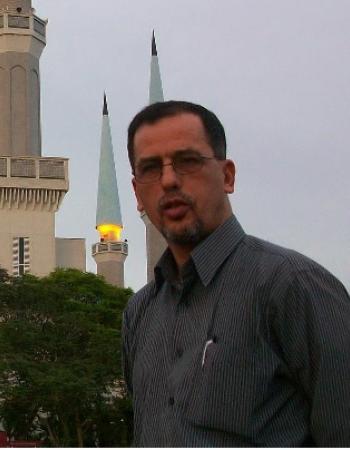Electro-Oxidation of Metal Oxide-Fabricated Graphitic Carbon Nitride for Hydrogen Production via Water Splitting
Hydrogen is a great sourcez of energy due to having zero emission of carbon-based contents. It is found primarily in water, which is abundant and renewable. For electrochemical splitting of water molecules, it is necessary to use catalytic materials that minimize energy consumption. As a famous carbon material, graphitic carbon nitride, with its excellent physicochemical properties and diversified functionalities, presents great potential in electrocatalytic sensing. In the present work, graphitic carbon nitride-fabricated metal tungstate nanocomposites are synthesized by the hydrothermal method to study their applications in catalysis, electrochemical sensing, and water splitting for hydrogen production. Nanocomposites using different metals, such as cobalt, manganese, strontium, tin, and nickel, were used as a precursor are synthesized via the hydrothermal process.
The synthesized materials (g-C3N4/NiWO4, g-C3N4/MnWO4, g-C3N4/CoWO4, g-C3N4/SnWO4, g-C3N4/SrWO4) were characterized using different techniques, such as FTIR and XRD. The presence of a functional groups between the metal and tungstate groups was confirmed by the FTIR spectra. All the nanocomposites show a tungstate peak at 600 cm−1
, while the vibrational absorption bands for metals appear in the range of 400–600 cm−1 . X-ray diffraction (XRD) shows that the characteristic peaks matched with the JCPDS in the literature, which confirmed the successful formation of all
nanocomposites. The electrochemical active surface area is calculated by taking cyclic voltammograms of the potassium–ferrocyanide redox couple. Among the entire series of metal tungstate, the g-C3N4/NiWO4 has a large surface area owing to the high conductive properties towards water oxidation. In order to study the electrocatalytic activity of the as-synthesized materials, electrochemical water splitting is performed by cyclic voltammetry in alkaline medium. All the synthesized materials proved to be efficient catalysts with enhanced conductive properties towards water oxidation. Among the entire series, g-C3N4 -NiWO4 is a very efficient electrocatalyst owing to its higher active surface area and conductive activity. The order of electrocatalytic sensing of the different composites is: g-C3N4 -NiWO4 > g-C3N4 -SrWO4 > g-C3N4 -CoWO4 > g-C3N4 -SnWO4 > g-C3N4 -MnWO4 . Studies on electrochemically synthesized electrocatalysts revealed their catalytic activity, indicating their potential as electrode materials for direct hydrogen evolution for power generation

The focus in recent years has been on developing innovative, green technologies for energy production and storage. Nanocomposite materials are attractive due to their exceptional performance,…

With the rapid development of biomedical technology, biodegradable and implantable energy storage devices for …

Electrochemical energy storage devices are vital for renewable energy integration and the deployment of electric vehicles. Ongoing research seeks to create new materials with innovative…

